Each edge of the cube contains a capacitance . The equivalent capacitance between the points and will be
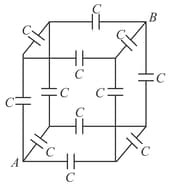


Important Questions on Capacitance
The potential difference between the points and in the adjoining circuit will be
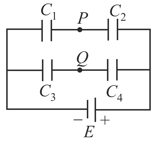
resistances each of resistance are joined with capacitors of capacity (each) and a battery of emf as shown in the figure. In steady state condition, ratio of charge stored in the first and last capacitor is:

A parallel plate capacitor without any dielectric has capacitance . A dielectric slab is made up of two dielectric slabs of dielectric constants and and is of same dimensions as that of capacitor plates and both the parts are of equal dimensions arranged serially as shown. If this dielectric slab is introduced (dielectric enters first) in between the plates at a constant speed , then a variation of capacitance with time will be best represented by:
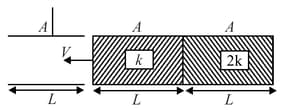
An isolated metallic object is charged in vacuum to a potential using a suitable source, its electrostatic energy being . It is then disconnected from the source and immersed in a large volume of dielectric with dielectric constant . The electrostatic energy of the sphere in the dielectric is:
Consider a parallel plate capacitor. When half of the space between the plates is filled with some dielectric material of dielectric constant K as shown in below, the capacitance is . However, if the same dielectric material fills half the space as shown in , the capacitance is . Therefore, the ratio is
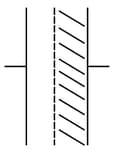
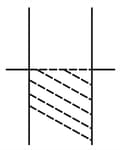
A network of six identical capacitors, each of capacitance is formed as shown below. The equivalent capacitance between the point and is
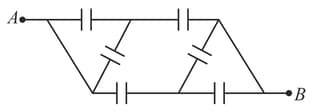
A capacitor of capacitance is charged to a potential difference of . It is then connected to an uncharged capacitor of capacitance

Find:
The charge flow through connecting wire till steady-state on each of the two capacitors after the connection in .
The total electrostatic energy stored in both capacitors in .
The heat produced during the charge transfer from one capacitor to the other in
